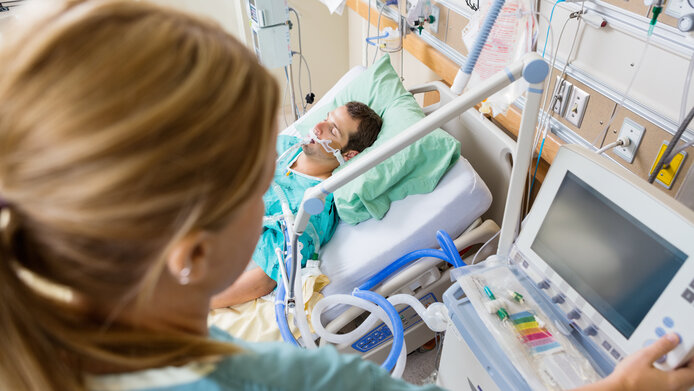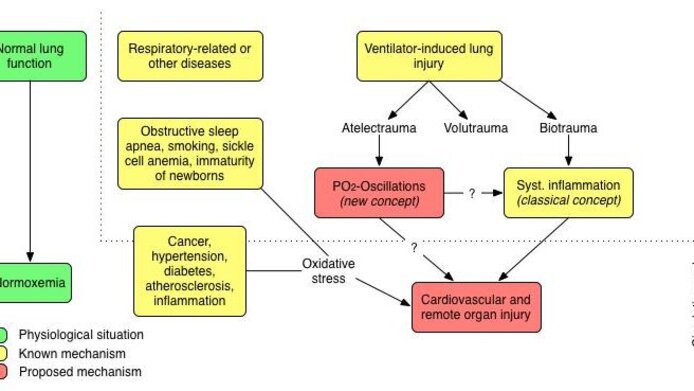Respiratory failure – Researchers in Vienna investigate damage mechanism

Many severely ill patients suffer acute respiratory failure in intensive care units (ICUs). These patients have great difficulty in breathing, their blood oxygen level drops sharply and the carbon dioxide level rises. In order to stabilise this dysfunctional gas exchange, doctors employ mechanical ventilation. “But that can result in something like a vicious cycle”, explains Klaus Ulrich Klein from the Medical University of Vienna. According to this anaesthetist, mechanical ventilation can exacerbate damage to the lungs, sometimes triggering dire consequences such as prolonging the patient’s stay in the ICU, cognitive dysfunctions or remote organ injury.
Significance of rapid changes still unclear
Mechanical stress exercised on the lung leads, inter alia, to rapid partial pressure of oxygen (PO2) changes in the lung. While familiar for a long time, this phenomenon has only recently become the subject of clinical research. It is still unclear, however, in what way these oscillations contribute to respiratory distress. “We assume that rapid PO2 changes induce the generation of free oxygen radicals and local inflammation reactions in the lung and thus constitute an additional root cause for lung damage during mechanical ventilation”, comments Klein. In a basic-research project funded by the Austrian Science Fund FWF, a team headed by Klein is now looking into the underlying mechanisms and signalling paths triggered by rapid PO2 changes in the lungs. The anaesthetist underlines the significance of this line of research, explaining that free oxygen radicals generally play an important role in the genesis of pulmonary, cardiovascular, neurodegenerative and age-associated disease. Currently, the scientists are looking particularly into strategies that will allow them to optimise the ventilation settings for each individual case so as to minimise lung damage.
Experiments with cells and substances
In order to analyse the impact of oxygen changes on lung cells, the research group at the Medical University of Vienna started out by developing a novel cell-culture system (bioreactor) that compares the effects of constant and rapidly fluctuating PO2 concentrations on pulmonary function. Additional control experiments investigate the contributory factors of different types of cells in a lung damaged by PO2 changes and the effect of classical substances. “We use substances that reduce the generation of free oxygen radicals or the release of inflammation mediators”, specifies team leader Klaus Ulrich Klein. In a forthcoming step, the researchers are going to translate the results obtained in cell cultures to an ex-vivo level by exposing isolated pig lungs to different PO2 concentrations.
A foundation in support of basic research
The medical research project “Rapid PO2-changes as a mechanism of lung injury” (2016-2018) is being funded by the Gottfried and Vera Weiss Prize awarded by the Austrian Science Fund FWF. As of 2015, the FWF has been issuing calls for project proposals in the fields of anaesthesiology and meteorology on behalf of the Weiss Science Foundation. The Prize is designed to support young scientists working in these two target fields.
Personal details Klaus Ulrich Klein is a consultant at the Department of Anaesthesiology, General Intensive Care and Pain Management at the Medical University of Vienna. His research concentrates on mechanisms for the protection of organs - specifically the lung, heart and brain - during surgery and in ICUs. In March 2016, the FWF awarded Klein the Weiss Prize in the field of anaesthesiology.
Publications






